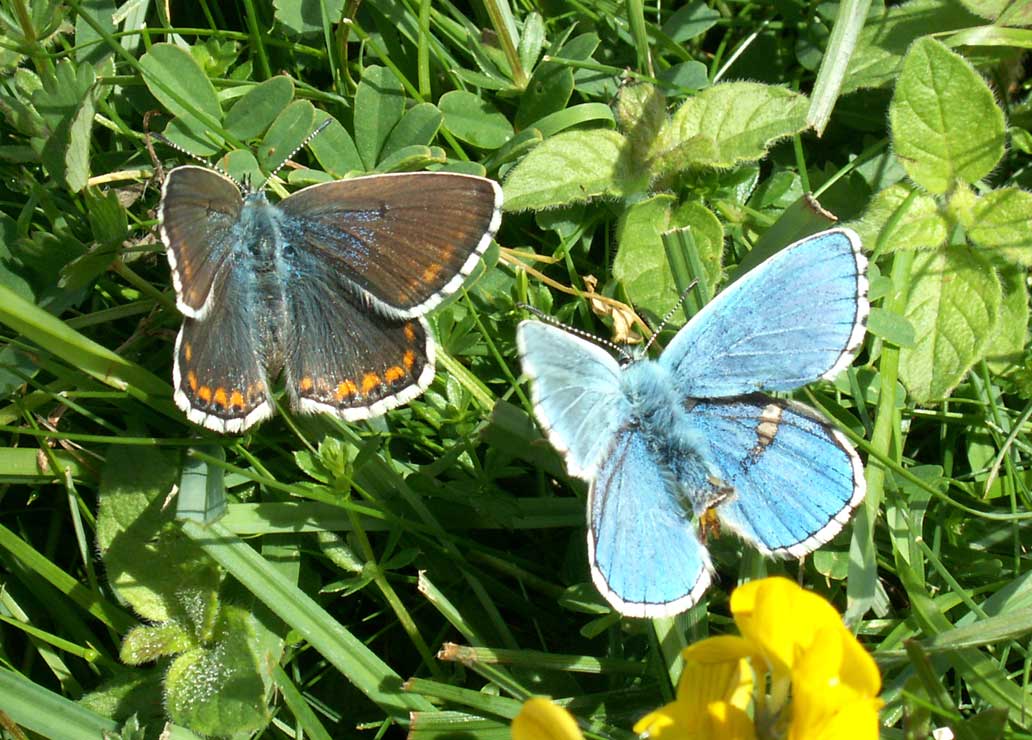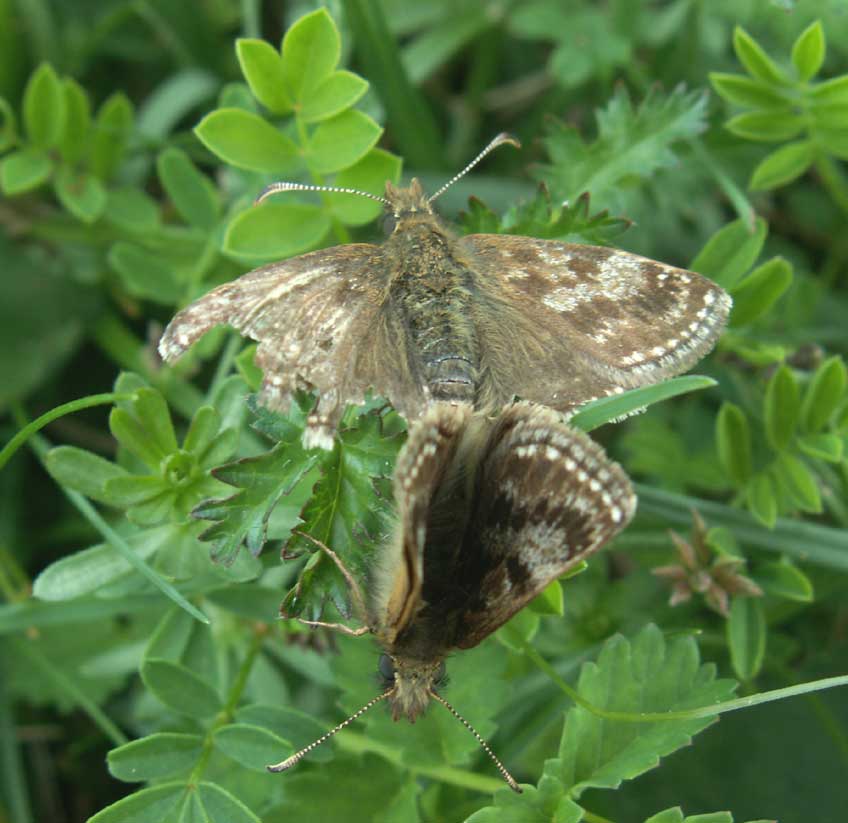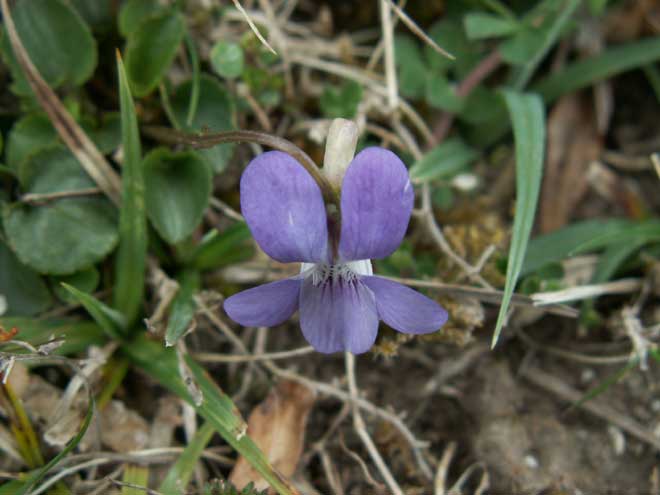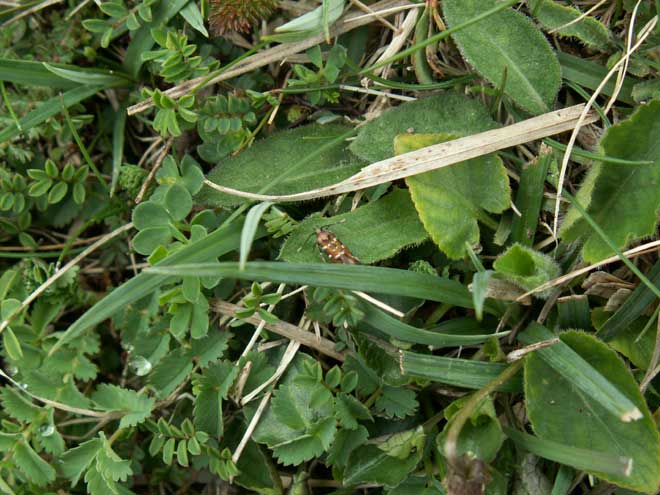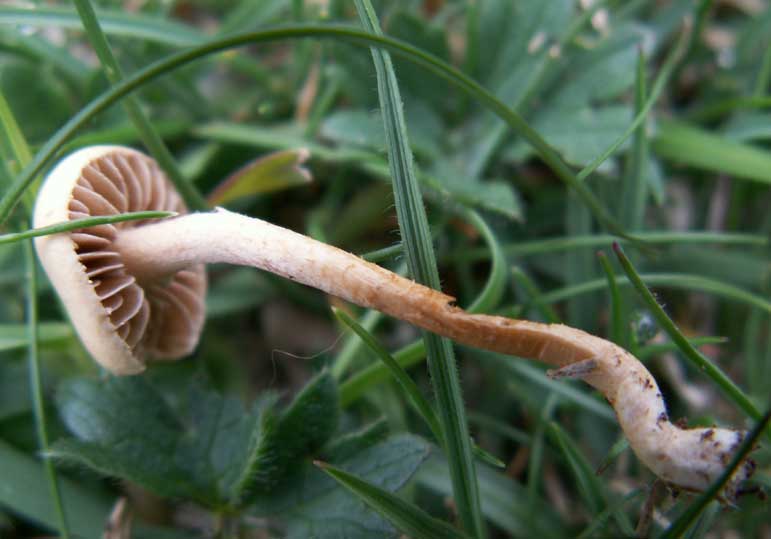-
 Lower
Slopes of Mill Hill 2006: The
Shoreham Bank
Lower
Slopes of Mill Hill 2006: The
Shoreham Bank
The
lower slopes of Mill Hill contains about 6.4
acres of open herbland, with over six acres of a continuous carpet of Horseshoe
Vetch, Hippocrepis
comosa, mixed with other herbs,
sedges and grasses. Its greatest claim to fame is the large number (3000+
in a good year) of Chalkhill Blue Butterflies.
My
transect route for recording butterflies
is 400 metres (default half-transect) and a total of 750 metres if I return
along the path (full transect). The half transect route covers 1.2 acres
of the best butterfly ground.
First
Draft of the Article for the Shoreham Society Newsletter
Representations
to the Local Adur Plan
Adur
Butterfly List 2006
Mill
Hill (lower slopes) Flora Images (technical)
Some
Indicator Plants of Ancient Downland

|

|

|

|
|
Horseshoe
Vetch
|
Common
Milkwort
|
Dog
Violet
|
Autumn
Gentian
|
Other
indicators on the lower slopes include Dropwort,
Autumn
Ladies Tresses (upper plateau), Hairy
Violet,
all
of which are rarely found on pastures, restored wildlife meadows or agricultural
downland. Other downland plants that are more likely on the biodiverse
down herbland are Wild Thyme,
Carline
Thistle, Stemless Thistle, Squinancywort,
Fairy
Flax, Small Scabious,
Common
Centaury and
Wild
Basil. There are other more widespread
wild plants like the Mouse-eared Hawkweed,
Hawkweeds, Autumnal Hawkbit, Bird's Foot Trefoil, Ground
Ivy, Germander
Speedwell, Field Speedwell, Sweet Violet,
Self-heal
and Yellow Wort
as well as many others.
WILDLIFE
REPORTS
Link
to the Reports 2007
17
December 2006
 |
I
have identified this solitary flower as that of the Autumnal
Hawkbit, Leontodon autumnalis*.The
leaves were not be seen. Apart from the dead heads of
Carline Thistle, this was the only flower
seen on the lower slopes. There were small amounts of Nostoc
Commune.
(*
ID not confirmed: the other possibility is
the Mouse-eared Hawkweed.) |
The
South
Downs Joint Committee (previously the South Downs Conservation Board)
have now removed the water trough buried amongst the Privet
on the lower slopes and erected one on the southern area south of the reservoir.
They have still left the discarded Privet
over the lower slopes shading out the Horseshoe
Vetch.
10
December 2006
Nostoc
Commune was visible on the lower slopes
of Mill Hill.
Report
by Ken Bishop
21
November 2006
There
was very little of interest and nothing moving on the damp and slippery
slopes. A Yellow Wort
was closed but still in flower. A few small patches of Nostoc
Commune were visible.
16
November 2006
There
were no signs of any butterflies or flying
insects on the overcast afternoon, after the showers (3.81
mm of rain) in the morning. The dead and cut
Privet
was still lying prone on the bank. I spotted a male Kestrel
resting on a Privet
bush with his back to me, and below me as I walked along the ridge, and
it was there for 30 seconds before he spotted me and flew off.
13
November 2006
Four
Clouded
Yellow Butterflies and one Red
Admiral were seen on Mill Hill. One of
the Clouded Yellows
rested on my finger. It was rather bedraggled.
9
November 2006
Eleven
Clouded
Yellows, including one form helice
were seen at Mill Hill in the afternoon
about 3:00 pm.
Despite the clear sky and fair (11.8 ºC)
weather they were rather sluggish, spending most of the time on either
warm scree or the wooden boards of the steps and tilting themselves perpendicular
to the sun's rays.
6
November 2006
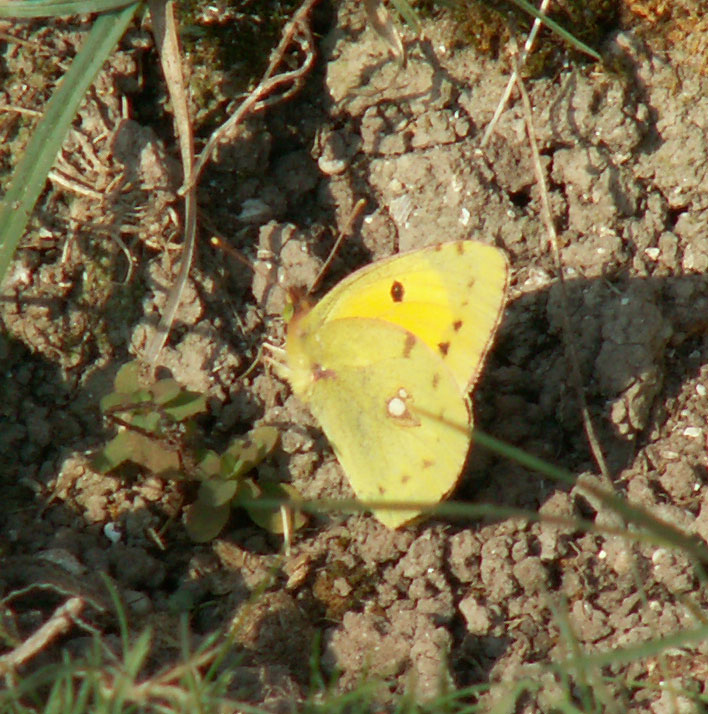 On
a clear day, 11 (to 13*) Clouded Yellow
Butterflies were seen on Mill
Hill (6 -8* on the lower slopes and one on the ridge by the Reservoir)
and on Old Erringham pasture (4). One of the Clouded
Yellows had white upper wings but conventional
(if slightly paler) underside, and one was a faded yellow and very tatty.
They were very flighty, rarely stopping for more than a few seconds at
each flower, and on the lower slopes of Mill Hill they visited Devil's
Bit Scabious (in hidden places I had not noticed
it before), Autumnal Hawkbit
and Wild Basil.
On the Old Erringham pasture near the stile adjoining Mill
Hill Nature Reserve, two of them were courting rising together vertically,
and their preferred nectar plant was Dandelion.
On
a clear day, 11 (to 13*) Clouded Yellow
Butterflies were seen on Mill
Hill (6 -8* on the lower slopes and one on the ridge by the Reservoir)
and on Old Erringham pasture (4). One of the Clouded
Yellows had white upper wings but conventional
(if slightly paler) underside, and one was a faded yellow and very tatty.
They were very flighty, rarely stopping for more than a few seconds at
each flower, and on the lower slopes of Mill Hill they visited Devil's
Bit Scabious (in hidden places I had not noticed
it before), Autumnal Hawkbit
and Wild Basil.
On the Old Erringham pasture near the stile adjoining Mill
Hill Nature Reserve, two of them were courting rising together vertically,
and their preferred nectar plant was Dandelion.
(*
The Clouded Yellow Butterflies
were flighty, chasing each other at speeds of an estimated 10 mph and the
lower figure of 11 seen means that no butterflies were counted twice. They
appeared to be resident in the area, rather than just passing through.
One of their caterpillar food plants, Bird's
Foot Trefoil, is abundant on Mill Hill.)
Butterfly
List 2006
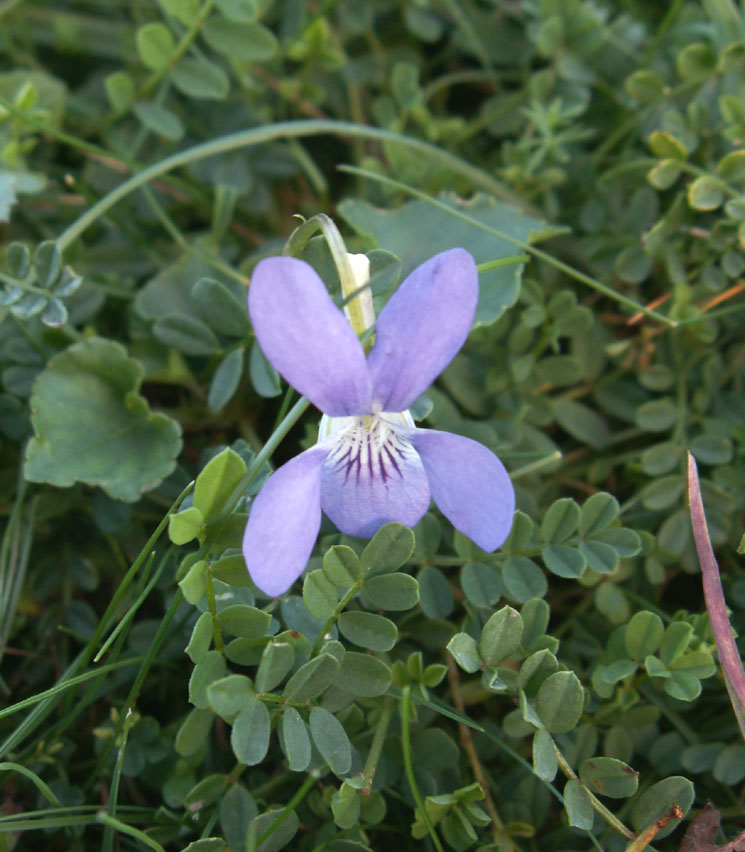 1
November 2006
1
November 2006
A
chill wind from the north-west made me wish I had worn gloves. Butterflies
were predictably low with just and six Clouded
Yellow Butterflies recorded at the northern
end of the lower slopes of Mill Hill. They
were all bright yellow and this was the most seen together this year. Two
were sparring or being amorous.
Butterfly
List 2006
Adur
Butterfly Flight Times
Two
Dog
Violets were seen in flower. The
Privet
and Bramble
was still lying prone at the northern end of the slopes. The amount of
scrub, especially Privet,
in the central area looked a very serious incursion.
Adur
Violets
27
October 2006
A
Silver
Y Moth was disturbed, but there were no
butterflies
were recorded in the afternoon, none on the one clump of Devils'
Bit Scabious. The
Privet
was still lying prone at the northern end of the slopes. I
do not know if the stumps have been treated with glysophate
or not? The scrub has increased over the last few years, especially the
Privet
at
the southern end.
No
mushrooms or fungi were spotted.
23
October 2006
As
the season is almost at a close, I would have been surprised to find a
multitude of butterflies. Two Meadow
Browns
settled
on the Devil's Bit Scabious
on the lower slopes of Mill Hill, and a
very bright yellow Clouded Yellow Butterfly
fluttered across my view as I tried to photograph the Meadow
Browns.
Both Meadow Browns
were damaged but did not look particularly tattered or old. The Devil's
Bit Scabious also attracted a Common
Carder Bee (bumblebee).
After
the rain, a couple of mushrooms
and the Nostuc
commune
was there as expected. Again the mushrooms
(illustrated
above) were elusive to identify. The gills
are white but similar mushrooms have been seen on the upper part of Mill
Hill before. There was no sign of a ring around the stem. The cap was about
the size of a commercial mushroom, an estimated 55 mm in diameter.
Entoloma
bloxamii, certainly not Agrocybe
dura.
BioImages
image link for this species
Fungi
of Mill Hill
Carline
Thistle was still in flower although many
of the heads had ceased and gone grey. Wild
Basil was in flower in small amounts. There
were a handful of earlier flowering plants
as well with their flowers or remnants on show, notably Greater
Knapweed. At least a dozen felled Privet,
still with their berries on, were cluttering up the northern part of the
lower slopes.
A
few small flies were noticed but no grasshoppers
were seen on a rapid passage journey where I returned via the ridge. A
single hoverfly Rhingia
campestris had not been recorded so
late in the year.
Sheep
were now grazing in the Old Erringham pasture next to the Steyning Road,
that is used occasionally for car boot sales. This is next door to the
field that they were grazing in on a week ago.
16
October 2006
Under
a cirrus, blue, sky, one Red Admirals
fluttered at low level southwards across the lower slopes and four Meadow
Browns
were
seen on the Devil's
Bit Scabious on the lower slopes of Mill
Hill. The
Devil's Bit Scabious
had ceased flowering in the first bunch and gone to seed, so the Meadow
Brown
Butterflies of both sexes were on the second
clump and one settled on the frequent Dog Violet and Wild Basil leaves.
Two of the Meadow
Browns
were intact and two of them worn and frayed at their wing edges. A handful
of Privet bushes
had been cut down at the northern end and left in their prone position
on the bank.
Adur
Butterfly & Moth List 2006
One
of the small, yet to be identified mushrooms was again discovered. It measured
30 mm in height with a cap diameter of 15 mm and it is photographed above.
The
best suggestion was the species Stropharia coronilla.
Fungi
of Mill Hill
Sheep
were grazing in the Old Erringham pasture next to the Steyning Road, and
the gate was open to allow them into the cut meadow immediately below Mill
Hill.
12
October 2006
Under
the midday sun a remarkable air temperature of 16.6
°C was attained
which brought the butterflies out and prompted
me to take a short and muddy walk to Mill Hill.
For most of the slopes there were only four Red
Admiral Butterflies all flying south,
and the first of three Clouded Yellow Butterflies
until the second clump (when approaching from the south) of Devil's
Bit Scabious which was awash with butterflies
on every flower head, with eight definite Meadow
Brown
Butterflies of both sexes (but mostly
females) until they fluttered off and then they were difficult to count
(without counting the same butterfly twice) and there could have been more,
with at least three Common
Blues,
one male and
two females.
Some of the Meadow
Browns
were
intact and some were damaged, but they did not look fresh or particularly
worn, unlike the Common
Blues
which
were all slightly frayed at the edges.
Full
Butterfly Report
Apart
from the expected
Carline Thistle and
a scattering of Autumn Hawkbits,
other plants in flower were few and far between but they did include a
handful of blue Common Milkworts, Wild
Basil, Lesser
Centaury, diminutive Hardheads
and
Self-heal.
The remains of a Small
Scabious and Dandelion
were spotted near the stile to Old Erringham. The Common
Milkworts may have been an unseasonal new
flower rather than a diminished old flower of the other plants.
One
medium-to-large white mushroom seen at the
southern end had a pure white cap with a diameter of 55 mm, white gills
and a white 90 mm stem with a veil, and it was probably the White
Dapperling, Leucoagaricus
leucothites. Nostoc
Commune
was seen over the prostrate vegetation at the northern end.
Adur
Fungi 2006
Fungi
of Mill Hill
8 October
2006
On
the lower slopes of Mill Hill, there were
eleven Meadow
Brown
Butterflies all on or in the vicinity
of Devil's Bit Scabious
in the northern part. These were the only butterflies
seen in a twenty minute passage visit on an overcast but warm (17.2
ºC) morning. At least one red Common
Darter
(dragonfly)
landed.
 |
 |
|
Hairy
(or
Sweet) Violet
|
Dog
Violet
|
A handful
of both flowering Dog Violets
and Hairy (or Sweet) Violets
were seen in passing and their leaves and sepal colour were both clearly
different. There were a few other flowers for the insects as well, including
Wild
Basil,
Yellow
Wort (a surprise flower and a flower rarely
visited by insects and I do not recall a single butterfly visit to this
flower),
the expected
Carline
Thistle and
Autumn
Hawkbits.
Adur
Violets
 A
handful of small mushrooms protruded above the short grass and herbs.
This
fungus has been identified as an Agaricus.
The
Privet
was
adorned with their black berries.
A
handful of small mushrooms protruded above the short grass and herbs.
This
fungus has been identified as an Agaricus.
The
Privet
was
adorned with their black berries.
Adur
Fungi 2006
Fungi
of Mill Hill
Images
3 October
2006
There
were at least seven Common Blue Butterflies
and 18 Meadow
Brown
Butterflies all on the lower slopes of
Mill
Hill, and one Small Copper
on the Devil's Bit Scabious. Only
three of the Meadow Browns
were males and at least one of the females, although looking fresh enough
was badly damaged. All the Common Blues
spotted with their wings open were the blue males, but half of them flew
of too quickly to see what gender they were. They were all a bit ragged
around their wing edges.
Adur
Butterfly List 2006
There
were not very many nectar plants remaining: Devil's
Bit Scabious was the clear favourite.
Autumn
Gentian was seen but it not yet opened
up in flower.
26
September 2006
The
lower slopes of Mill Hill in the early afternoon produced frequent butterflies
but slightly reduced in numbers and variety from nine
days ago. Meadow Brown
Butterflies (30+) led the way and most,
but not all, were females. They were counted, but there were so many on
the Devil's Bit Scabious
that I lost count in the confusion. There was a mixture of male and female
Common
Blues
(10+) and again they were difficult to count because nearly all of them
were on or around the Devil's Bit Scabious.
A Small Copper Butterfly settled
on the Devil's Bit Scabious.
A Large White Butterfly
and another Meadow Brown
was
spotted near the stile.

|

|
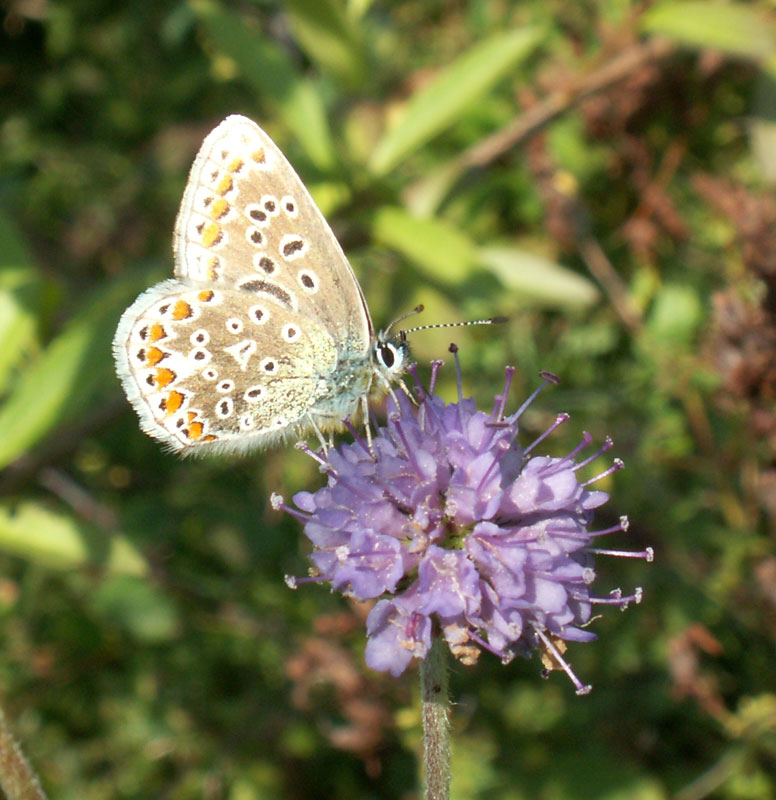 |
A
harvestman
crawled over the the leaves of Horseshoe Vetch
This
is probably the species Phalangium
opilio.
|
The unusual blue variety
of the female Common Blue Butterfly
which occurs at the beginning and end of their season
|
The female Common
Blue Butterfly (in the middle image) showing
the unusual crescent shape spot on the fore underwing
|
There
did not seem to be the numbers of Autumn Hawkbit
of my last visit and I did not make a note of any, although there were
a few scattered Wild Basil
still just about flowering and I spotted one autumn
Dog Violet. A
harvestman
crawled over the the leaves of Horseshoe Vetch. This is probably the species
Phalangium
opilio.
Adur
Violets
Adur
Spiders
17
September 2006
As
the wild flowers were generally dying
out everywhere, I decided to make a note of where the diminished numbers
of
butterflies were seen and what nectar
plants if any they were using.
The
lower
slopes of Mill Hill are one of the only places worth visiting for butterflies
in the middle to late September.
The numbers were less than earlier in the month. 25
Meadow
Browns
were counted scattered evenly over the slopes, visiting the common Autumn
Hawkbit, Leontodon autumnalis, one
making a a visit to the occasional Wild Basil.
Then on the northern part butterflies were all over the place settling
on Devil's Bit Scabious.
There was at least a further dozen bringing a total of 40+
Meadow Browns on the lower slopes. Generally,
the females (about half of them) were to be found on the short grass, possibly
looking for somewhere to lay their eggs. Adonis
Blues
were still around, but only nine
of them were seen and these were old. The Devil's
Bit Scabious was also attractive to Small
Heath Butterflies (11) ,
Common
Blues
(18)
and one attractive Small Copper.
Small
Heaths were more widespread, but the Common
Blues
were concentrated at the northern end. There was at least one bright
blue male that looked fresh. The female
Common Blues (over half of them and mostly worn and tattered)
seemed to be looking for somewhere to lay their eggs but there was so many
leaves of Horseshoe Vetch that they did not seem to settle on any Bird's
Foot Trefoil (their larval food plant). Most of them were brown all over
with the orange fringe spots, but one had lots of bright
blue on her upper wing
11
September 2006
It
was sunny so I walked over the lower slopes. Immediately, I saw a Clouded
Yellow Butterfly (one of five) and a Small
Heath Butterfly (one of ten). Adonis
Blue
Butterflies (20)
were still flying and mating. There was only only a pair of Chalkhill
Blues
which
have disappeared rapidly this year. There were a handful of Common
Blues
and
frequent Meadow
Browns
in the in the one acre half-transect.
Treble-bar
Moths (25+) were frequently disturbed.
6 September
2006
On
a sunny day after a gale, I did not know what to expect. There were still
36
Adonis Blues
including
ten
females, some of the these butterflies were
worn, but about a third of them were fresh and undamaged. Many females
may have been overlooked. Meadow
Browns
were the most numerous and I estimate at least fifty on the lower slopes,
but other butterflies were few and far between, an occasional Common
Blue and a confirmed Brown
Argus,
and only a pair of Chalkhill Blues
and
one Comma.
There were no Small Heath Butterflies
seen on the lower slopes but three were seen on the upper part of Mill
Hill. Treble-bar Moths
were disturbed easily, about twenty were seen and there were probably many
more. I was not looking at the plants, but I noticed that Carline
Thistle was attractive to the butterflies,
and that Stemless Thistle
was still in flower, and there was more Devil's
Bit Scabious noticed.
Butterfly
Report
30
August 2006
Overcast
and breezy and in the afternoon, I would not expect many butterflies,
but there were frequent Meadow Browns,
15 Adonis Blues,
7 Chalkhill Blues,
5
Small
Heaths, one Brown
Argus, at least two Common
Blues on the lower slopes of Mill
Hill. Many of the Adonis Blues
were already showing signs of wear at the edges and there did not appear
to be any fresh males. No females
were spotted on a casual ramble. Devil's
Bit Scabious was beginning to flower.
There were two clumps of Devil's Bit Scabious,
with one clump intertwined with Squinancywort.
A small pyralid moth Pyrausta aurata,
a Carpet Moth
and half a dozen Treble-bar Moths
were spotted easily.
27
August 2006
 Adonis
Blues
(110)
were
mating on the lower slopes of Mill Hill
on a breezy midday. The count was 110
(about
13 females seen). This was the most I have
ever counted on Mill Hill. The Adonis Blues
were evenly spread over the lower slopes and I would estimate their numbers
on Mill Hill at 350+.
All the females
were mating or heavily courting (about to mate). Chalkhill
Blues were still frequently seen and the
figure of 20
(may have been 30)
may be under their numbers as I lost count of them. Meadow
Browns (50+) were still very frequent,
but Small Heath Butterflies (5)
were only occasionally seen, with one Wall
Brown* that did not settle for confirmation
over the lower slopes. A small pyralid moth Pyrausta
aurata #
and a larger Treble-bar Moth
were spotted without looking for them. (*I
now think this was possibly a Meadow Brown?) (#
This could be Pyrausta purpuralis.)
Adonis
Blues
(110)
were
mating on the lower slopes of Mill Hill
on a breezy midday. The count was 110
(about
13 females seen). This was the most I have
ever counted on Mill Hill. The Adonis Blues
were evenly spread over the lower slopes and I would estimate their numbers
on Mill Hill at 350+.
All the females
were mating or heavily courting (about to mate). Chalkhill
Blues were still frequently seen and the
figure of 20
(may have been 30)
may be under their numbers as I lost count of them. Meadow
Browns (50+) were still very frequent,
but Small Heath Butterflies (5)
were only occasionally seen, with one Wall
Brown* that did not settle for confirmation
over the lower slopes. A small pyralid moth Pyrausta
aurata #
and a larger Treble-bar Moth
were spotted without looking for them. (*I
now think this was possibly a Meadow Brown?) (#
This could be Pyrausta purpuralis.)
Butterfly
Report
20
August 2006
With
the weather forecast predicting rain for the next week, I
ventured up the downs even though the conditions
(20.2 ºC at 11:00
am, 83% humidity,
Wind Force 4 falling to Force 3, direction southerly at Azimuth 158º)
were
far from ideal for butterflies.
Predictably
most of the butterflies were hiding and the numbers on Mill
Hill actually seen were down from the last visit. The walk did not
involve stopping and the count on the lower slopes was Chalkhill
Blues (29) and Adonis
Blues (43). The Chalkhill
Blues were thought to be undercounted as many
of them were not disturbed from hiding and a only half the butterflies
may have been counted. A further three Adonis
Blues fluttered over the Old
Erringham pasture near the stile. A pristine
Wall
Brown was chased and identified at the
southern end and a definite Small Heath
Butterfly visited a Stemless
Thistle in front of me half way along the
half-transect. Meadow Browns
(75) were widespread with an estimated
50 seen spread evenly over the lower slopes.
Full
Butterfly Report for the Day
17
August 2006
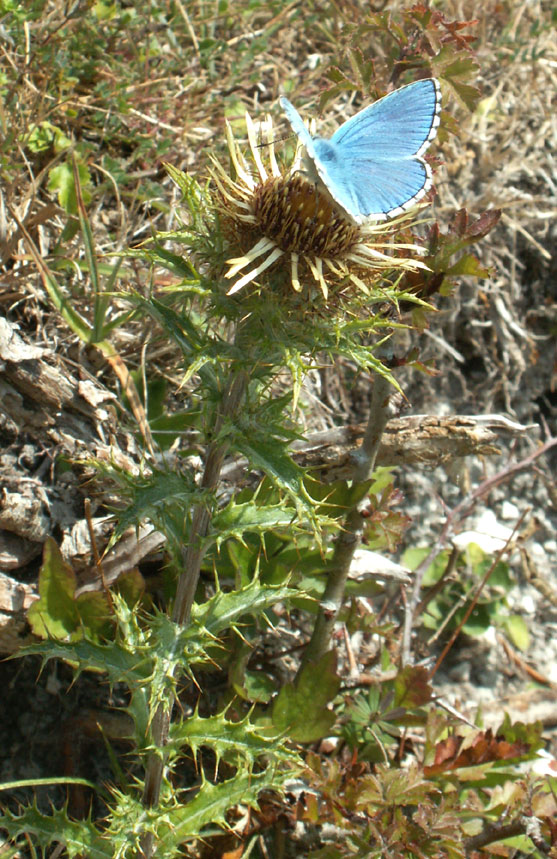 Under
a cloudy sky with spots of rain, the half transect count (1.2
acres) on the lower slopes of Mill Hill produced
an equal count of 57+ worn Chalkhill
Blues
and 57+ pristine male second brood
Adonis
Blue Butterflies, all fluttering around
with about twenty Common Blues.
At
times it was not easy to count and separate the species. The
Adonis
and Chalkhill Blues
were counted, but the plus signs are included because if there as any doubt
if it was an Adonis
or a Common Blue
it was put down as a Common Blue,
and with Chalkhill Blues,
possible duplicates were excluded and females
are likely to have been overlooked. The Adonis
Blues were in a bright pristine condition
but many of them already showed nicks out of their hind wings. This is
the largest count for the second brood Adonis
and nearly (or possibly) the largest seen on Mill Hill in one day. Alas,
the Adonis Blues,
although widespread, were not evenly distributed over Mill Hill, with a
concentration at the northern end of the lower slopes. Not more than a
wild guess, rather than an estimate of these bright blue butterflies on
Mill Hill may be not much more than 100,
but possibly up to 200
(this is the peak day total rather than the overall numbers which will
be higher).
Under
a cloudy sky with spots of rain, the half transect count (1.2
acres) on the lower slopes of Mill Hill produced
an equal count of 57+ worn Chalkhill
Blues
and 57+ pristine male second brood
Adonis
Blue Butterflies, all fluttering around
with about twenty Common Blues.
At
times it was not easy to count and separate the species. The
Adonis
and Chalkhill Blues
were counted, but the plus signs are included because if there as any doubt
if it was an Adonis
or a Common Blue
it was put down as a Common Blue,
and with Chalkhill Blues,
possible duplicates were excluded and females
are likely to have been overlooked. The Adonis
Blues were in a bright pristine condition
but many of them already showed nicks out of their hind wings. This is
the largest count for the second brood Adonis
and nearly (or possibly) the largest seen on Mill Hill in one day. Alas,
the Adonis Blues,
although widespread, were not evenly distributed over Mill Hill, with a
concentration at the northern end of the lower slopes. Not more than a
wild guess, rather than an estimate of these bright blue butterflies on
Mill Hill may be not much more than 100,
but possibly up to 200
(this is the peak day total rather than the overall numbers which will
be higher).
 |
 |
|
The
Meadow
Browns
were at about 60 butterflies on the lower slopes. There was one Large
White Butterfly in the distance, plus
one each of a Clouded Yellow,
seen visiting a diminutive Hardhead,
and a definite Small Heath,
the latter two both on the Old Erringham
pasture near the stile. A Treble-bar Moth
was
seen near the Tor Grass and decrepid
Perforate
St John's Wort as before. A Silver
Y Moth was noted in the Old
Erringham pasture, but the moths
were frequently overlooked.
Butterfly
Report
6 August
2006
The
count of Chalkhill Blues
on the lower slopes was 108
(half transect) with four Common Blues.
There
was not an even distribution, with more
Chalkhill
Blues on the southern part of the lower slopes
than expected. Females
were
only seen at about 5%. Stemless Thistle
was visited by Chalkhill Blues
and Meadow
Browns.
On the first Carline Thistle
spotted, there were three Chalkhill Blues.
Adur
Butterfly List 2006
4 August
2006
Chalkhill
Blues (129) on Mill
Hill only (Mill Hill estimates at 450
on the hill). The half transect count was
exactly 100 of
both sexes in about 20 minutes. This puts
the Chalkhill Blues
past their peak early this year. Female Chalkhill
Blues were at 20% on the lower slopes of Mill
Hill. Common Blues
were counted at 31. Gatekeepers
outnumbered the Meadow Browns
by a short percentage and were both frequently seen on a cloudy day.
A Treble-bar Moth
was noted in an identical place amongst the Tor
Grass as five days earlier. The yellow flowers
of Great Mullein
were just beginning to show.
Butterfly
Report
 30
July 2006
30
July 2006
Chalkhill
Blue Butterflies showed just an average
year on Mill Hill with just 151
recorded on the lower slopes in the sunshine, which equates with an estimated
day record on the wing of about 650 on
Mill Hill. This was disappointing compared to 2003.
Stemless
Thistle was the most often used nectar plant,
as well as Wild Basil,
and Round-headed Rampion
was also seen used on one occasion.
Females
were
at 5% or less only and probably under-recorded.
Other butterflies included
Meadow
Browns,
Gatekeepers,
Small
Whites (possibly &/or Green-veined), Red
Admirals, Small/Essex Skippers, Marbled
Whites (9+), and just the one confirmed
Small
Heath.
Butterfly
Report
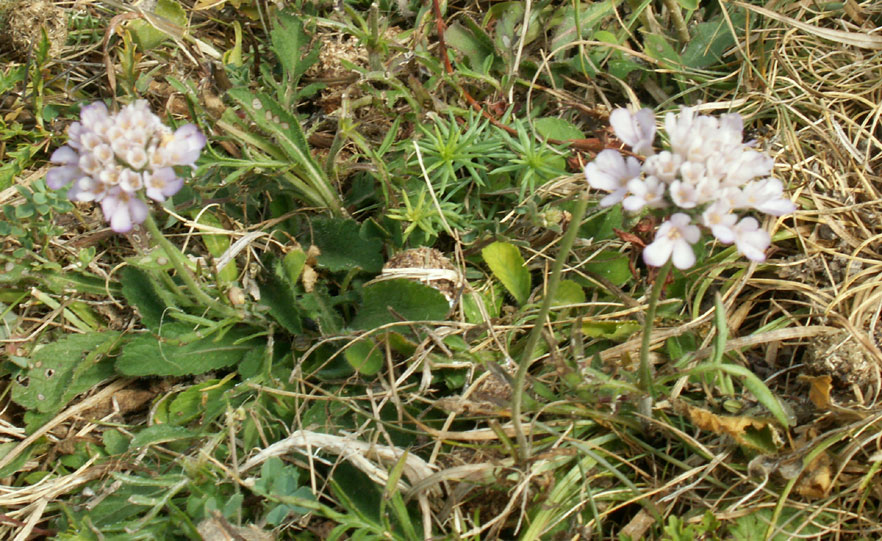 |
|
 |
Carline
Thistle was about to burst into life on
the
lower slopes of Mill Hill, with
Dodder
recorded
for the first time on Perforate St John's
Wort. Diminutive (50 mm high)
Scabious
was noted as usual. I assume that this is the Small
Scabious, but there were no leaves seen
and I do not know to confirm this.
Scabious
Seed Heads Comparison Image
23
July 2006
At
least, in the late morning it was a bit cooler (after
the thunderstorms of 22
July 2006) mostly
overcast at 24.1 ºC from 11:00 am,
and tolerable for watching butterflies. I
spent 20 minutes on the lower slopes and noted the following species:
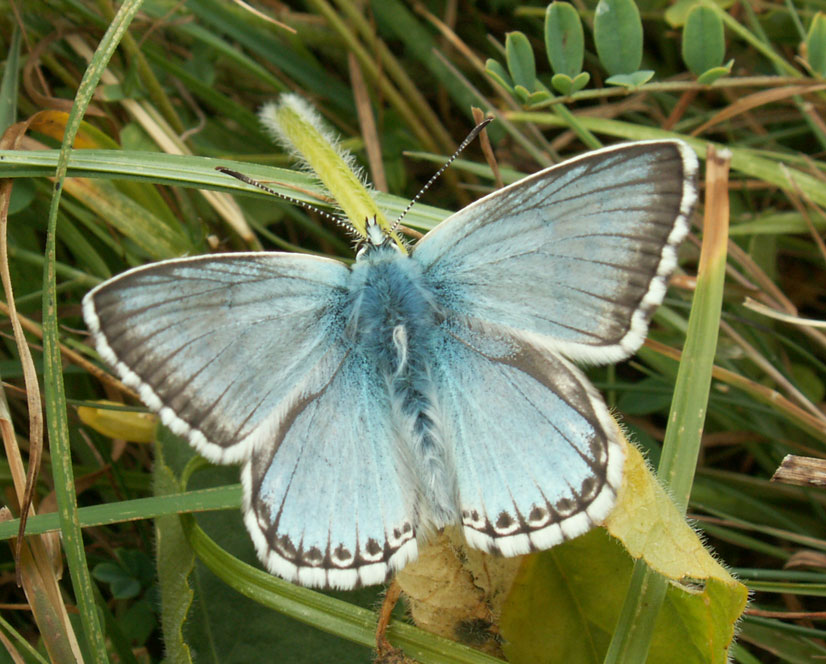 Chalkhill
Blue 136
= common
Chalkhill
Blue 136
= common
Large
White = occasional
Gatekeeper
E 30 = frequent
Meadow
Brown 18 = frequent
Small
Skipper = occasional
Marbled
White 10
=
occasional
The
Chalkhill
Blues were spread evenly over the area beneath
the path and they seemed to be widespread above the path as well. the 136
were recorded in the half transect area of about an acre and I would estimate
the total to be be at least 550 butterflies.
The females were probably missed.
Butterfly
Report
Six-spot
Burnet Moths were occasionally seen and
occasionally overlooked, and the same applies to the a occasional Silver
Y Moth. Two of the pyralid micro-moths
Pyrausta
nigrata were noted on the lower slopes
of Mill Hill, but many more have been overlooked.
Stemless
Thistle was noted as very frequent and
Round-headed
Rampion. Vervain always
seems to grow near the path and some large clumps were noted near the steps
leading down to the slopes at the southern end.
17
July 2006
It
was simply too warm and I gave up recording butterflies
after about 12 minutes and returned by the ridge path, now overgrown. The
frequencies are from the 12 minutes on the lower slopes only.
Large
White = occasional
Gatekeeper
= frequent
Meadow
Brown
= occasional
Small
Skipper = occasional
Chalkhill
Blue 19
=
frequent
Marbled
White 16
=
frequent
Butterfly
Report
There
was a large brownish damselfly, almost
the same colour as a female Common Darter, but it landed for a couple seconds
only with folded closed wings, so it must be a damsel.
It
was the warmest morning of the year so far as the air temperature measured
29.6 ºC at 11:39 am.
Later, in the afternoon, the temperature exceed 30 ºC
11
July 2006
From
either side of the steps leading down to the lower slopes from the south,
I disturbed three young Wrensthat
flew to and fro across the path before disappearing into the dense scrub.
Marbled
White Butterflies appeared almost immediately
followed by four Chalkhill Blues
before their season had started. They seem to be much paler than the later
emergers and I have noticed this before. Gatekeepers
were frequent, the most prevalent butterfly a shade ahead of the Small
Skippers with the occasional Meadow
Brown
and Red
Admiral. Most smaller moths went unnoted
although the first of the second brood
Pyrausta
nigrata was definitely recorded and
photographed above.
Butterfly
Report
Robin's
Pin Cushions (a
gall) were noted near the steps and the first flowers of Wild
Basil, Round-headed Rampion
and Stemless Thistle.
3 July
2006
A
surprise very early couple of Chalkhill
Blues were seen on the lower slopes of
Mill
Hill. In the sunshine I was unable to chase the skippers
around to discover what they were. There could have been my first Small
Skipper of the year (and probably were).
Marbled
Whites led the way with 49 counted, with
at least 36 recorded on the lower slopes. Meadow
Browns
were
frequently seen. Other
butterflies
were a handful of skippers including Large
Skippers, a few Small
Heaths, and Gatekeepers
on the scrub margins. My first Common Darter
(dragonfly)
of the year was seen at the northern end.
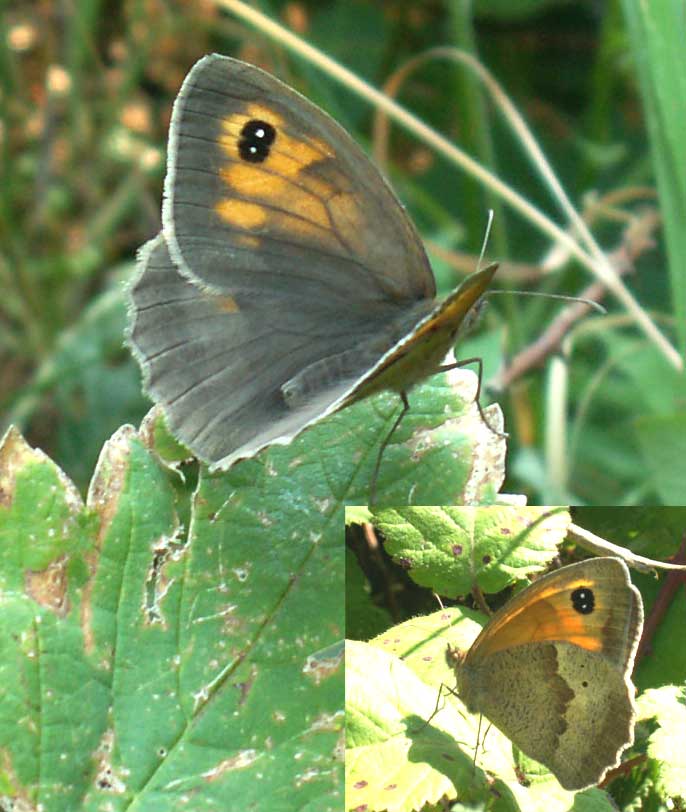 |
This
Meadow
Brown
was
discovered with double spicks. This could be regarded as an aberration.
It is not on the Cockayne
list though. |
Butterfly
Report
Adur
Butterfly First Flight Times
Flora
was varied, with following frequent on the lower slopes: Lesser
Centaury, Yellow Wort, Mouse-eared
Hawkweed, Wild Thyme,
Self-heal,
Squinancywort,
Fairy
Flax, Small Scabious,
and invasive Perforate St. John's Wort
and much too much Privet.
(Privet
contains toxins
that are harmful to horses and some other animals.)
23
June 2006
I
traversed the half transect rather quickly and noted Common
Blue Butterflies, including females and
Small
Heath Butterflies mostly. Lesser
Centaury was seen in flower. Grasshoppers
could be heard quickly almost everywhere, but maybe concentrated in the
Tor Grass patches.
Butterfly
List
20
June 2006
 The
first
Marbled White Butterfly
of the year fluttered strongly over the lower slopes of Mill
Hill where the Horseshoe Vetch
flowers had almost disappeared and the corkscrew-like seed pods could be
discovered if searched amongst the emerging herbs and new flowers.
The largest yellow patches on Mill Hill were now Bird's
Foot Trefoil. Butterflies
were frequent (about 40), but not common. The most prevalent on the lower
slopes were Common Blues
(10) and Small Heath Butterflies
(15). Two pairs of Small Heaths
were courting. The frequent small moths were not
identified, and there was at least one larger Treble
Bar Moth. Squinancywort
was
in flower and a handful of diminutive Pyramidal
Orchids were seen in the short grass and
herbs.
The
first
Marbled White Butterfly
of the year fluttered strongly over the lower slopes of Mill
Hill where the Horseshoe Vetch
flowers had almost disappeared and the corkscrew-like seed pods could be
discovered if searched amongst the emerging herbs and new flowers.
The largest yellow patches on Mill Hill were now Bird's
Foot Trefoil. Butterflies
were frequent (about 40), but not common. The most prevalent on the lower
slopes were Common Blues
(10) and Small Heath Butterflies
(15). Two pairs of Small Heaths
were courting. The frequent small moths were not
identified, and there was at least one larger Treble
Bar Moth. Squinancywort
was
in flower and a handful of diminutive Pyramidal
Orchids were seen in the short grass and
herbs.
(NB:
Some of the Common Blue females could
be mistaken for Small Blues
by the inexperienced. Small Blues
are absent from the lower slopes of Mill Hill, but will occasionally be
seen in the Mill Hill Cutting.)
Butterfly
Report & List
Adur
Butterfly First Flight Times
15
June 2006
 About
half of the 25 Adonis Blue Butterflies
on Mill Hill showed signs of raggedness
and age, whereas the 8 Common Blues
appeared fresher. Some of the Adonis females
were coloured a dark brownish navy blue which is how they appeared to the
naked eye. I saw my first Meadow
Brown
Butterfly of the year on the lower slopes,
where I was surprised at a spotting a late Grizzled
Skipper (absolutely definite) and I had
a better look at a Large Skipper
that did not settle. There were 12 Small
Heath Butterflies counted on the half
transect.
Grasshoppers were stridulating
and a Common Field Grasshopper, Chorthippus
brunneus,
was identified. There seemed
to be more
Thyme
than previous years. The Thyme
was visited by butterflies, notably the single
Painted
Lady of the day on the Old Erringham pasture
(north-west of Mill Hill Nature Reserve).
About
half of the 25 Adonis Blue Butterflies
on Mill Hill showed signs of raggedness
and age, whereas the 8 Common Blues
appeared fresher. Some of the Adonis females
were coloured a dark brownish navy blue which is how they appeared to the
naked eye. I saw my first Meadow
Brown
Butterfly of the year on the lower slopes,
where I was surprised at a spotting a late Grizzled
Skipper (absolutely definite) and I had
a better look at a Large Skipper
that did not settle. There were 12 Small
Heath Butterflies counted on the half
transect.
Grasshoppers were stridulating
and a Common Field Grasshopper, Chorthippus
brunneus,
was identified. There seemed
to be more
Thyme
than previous years. The Thyme
was visited by butterflies, notably the single
Painted
Lady of the day on the Old Erringham pasture
(north-west of Mill Hill Nature Reserve).
Full
Butterfly Report
11
June 2006
As
on the lower slopes of Mill Hill the massive
yellow covering of Horseshoe Vetch
has now disappeared and the long grasses in the pasture of Old
Erringham has also obscured the field of Bulbous
Buttercups, but many of the other wild
plants are now flowering, including Dropwort
and
Bird's
Foot Trefoil.
The
lower slopes butterfly count was as follows
in a heatwave:
| Adonis
Blues |
36
definite, most (all except about 4 seen) of them males |
| Undetermined
blue species |
8
were not definites, at least one was possibly a Common
Blue |
| Small
Heath |
7
on the lower slopes |
Grasshoppers
were heard in one patch for the first time this year.
Adur
Grasshoppers
Butterfly
Report (all sites)
4 June
2006
A
quarter transect stroll in the late morning sunshine saw the signs of diminishing
Horseshoe
Vetch on the lower slopes to something like
70% of the peak and 36
Adonis Blue Butterflies,
all
male and fresh, and at least one each of Small
Heath,
Grizzled
Skipper (two definites), Dingy
Skipper,
Brimstone
and Large White
with one large vanessid-sized unidentified dark
or brown butterfly. There were four more Adonis
Blue Butterflies near the stile to Old Erringham,
two on the Mill Hill side and two just
inside the pasture.
 Yellow
Wort leaves had pushed up but were not flowering
yet, with the first signs of Dropwort,
Hairy
Violet in flower and the beginnings of Wild
Thyme, more in the Old Erringham pasture than
on the Shoreham Bank. Mouse-eared Hawkweed
was
lost amongst the Horseshoe Vetch
on the lower slopes but they were common in the pasture as well where the
flowers were clearly seen and matched up
to their leaves.
Yellow
Wort leaves had pushed up but were not flowering
yet, with the first signs of Dropwort,
Hairy
Violet in flower and the beginnings of Wild
Thyme, more in the Old Erringham pasture than
on the Shoreham Bank. Mouse-eared Hawkweed
was
lost amongst the Horseshoe Vetch
on the lower slopes but they were common in the pasture as well where the
flowers were clearly seen and matched up
to their leaves.
2 June
2006
The
Horseshoe
Vetch is now just past its best on the
the lower slopes of Mill Hill. I took some
measurements and my estimate of the number of Horseshoe
Vetch flower heads (each with seven or eight
flowers) is 25 million.
In the patches which were covered by flowers there were about 500 flower
heads every square metre. However, it was only about 30% of the main Horseshoe
Vetch area that was actually covered in the
yellow flowers and some parts of the slopes did not have any Horseshoe
Vetch at all.
The
butterfly
count on a hazy slight overcast afternoon was a paltry eight male Adonis
Blues and just a single Small
Heath on a passage visit. A Yellow
Shell Moth flew into the Privet.
Adur
Moths
Wild
Thyme was just beginning to show amongst
the Bulbous Buttercups
in the Old Erringham pasture near
the stile to Mill Hill Nature Reserve.
29
May 2006
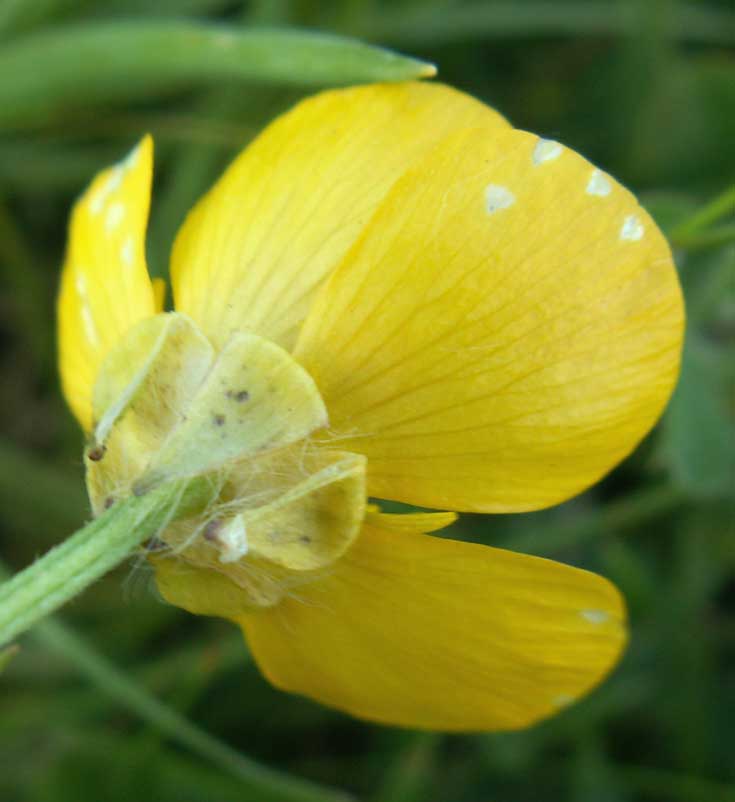 A
passage journey (I did not pause to look for butterflies)
along the path through the lower slopes
of Mill Hill disturbed just two male Adonis
Blues and a female
on its own and one Dusky Skipper.
In the Old Erringham pastures of confirmed Bulbous
Buttercups there was another male Adonis
Blue and a Wall
Brown visited a Bulbous
Buttercup near the stile to Mill
Hill Nature Reserve.
A
passage journey (I did not pause to look for butterflies)
along the path through the lower slopes
of Mill Hill disturbed just two male Adonis
Blues and a female
on its own and one Dusky Skipper.
In the Old Erringham pastures of confirmed Bulbous
Buttercups there was another male Adonis
Blue and a Wall
Brown visited a Bulbous
Buttercup near the stile to Mill
Hill Nature Reserve.
 The
Old
Erringham pastures were examined for their
flora. It was quite different from Mill Hill with a higher proportion of
grasses, but with a selection of herbs (excluding grasses), especially
noting that the dramatic explosion of Bulbous
Buttercups, with the blue Milkwort
doing
very well, and both Horseshoe Vetch
and Bird's Foot Trefoil
noted in small amounts.
The
Old
Erringham pastures were examined for their
flora. It was quite different from Mill Hill with a higher proportion of
grasses, but with a selection of herbs (excluding grasses), especially
noting that the dramatic explosion of Bulbous
Buttercups, with the blue Milkwort
doing
very well, and both Horseshoe Vetch
and Bird's Foot Trefoil
noted in small amounts.
Images
Adur
Buttercups
28
May 2006
Adonis
Blue
Butterflieswere
mating on the lower slopes of Mill Hill,
with three mating embraces seen and at least another thirteen of these
unattached bright blue butterflies flying around. After the rain of the
gales of the last few days, butterflies were
sparse for the time of the year, the only others on the lower slopes of
Mill Hill were five Dingy Skippers.
Moths
noted were two Pyrausta nigrata and
a Yellow Shell Moth
that flew into the Privet.
Butterfly
Report (all sites)
The
Horseshoe
Vetch was prevalent on the lower slopes, at about 70% of its luxuriance.
Some flowers had not yet opened and it has appeared at the northern end
which it usually does first and has not yet covering much of the steeper
banks, which are always at least a week later. Over a dozen Honey
Bees were attracted to the Horseshoe Vetch.
The Horseshoe Vetch was flowering late compared to 2004 and 2005. There
were scores, over a hundred of the Hawkbits* in flower. (*These
could be Dandelions with hidden leaves?
Might be Hawkweeds as well.)
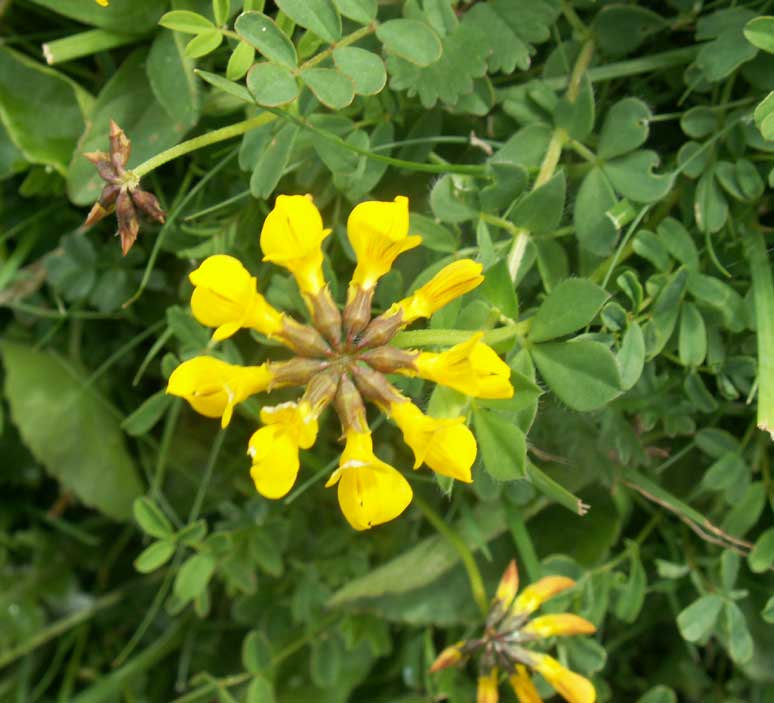 |
 |
 |
| Most
of the Horseshoe Vetch flowers are blooming and others have scarcely
burst from their pods yet. |
Salad
Burnet and other herbs
NB:
the leaves can be mistaken for Burnet Saxifrage by the unwary. |
Cuckoo
Spit is produced out of the anus of the immature stages of sap-sucking
insects known as froghoppers.
Cuckoo
Spit Page
|
| A
mushroom
with a cap diameter of 28 mm and a height of about 35 mm grew amongst the
herbs of the lower slopes of Mill
Hill.
This
fungus has been seen before.
Adur
Fungi 2006
Image
right: Horseshoe
Vetch |
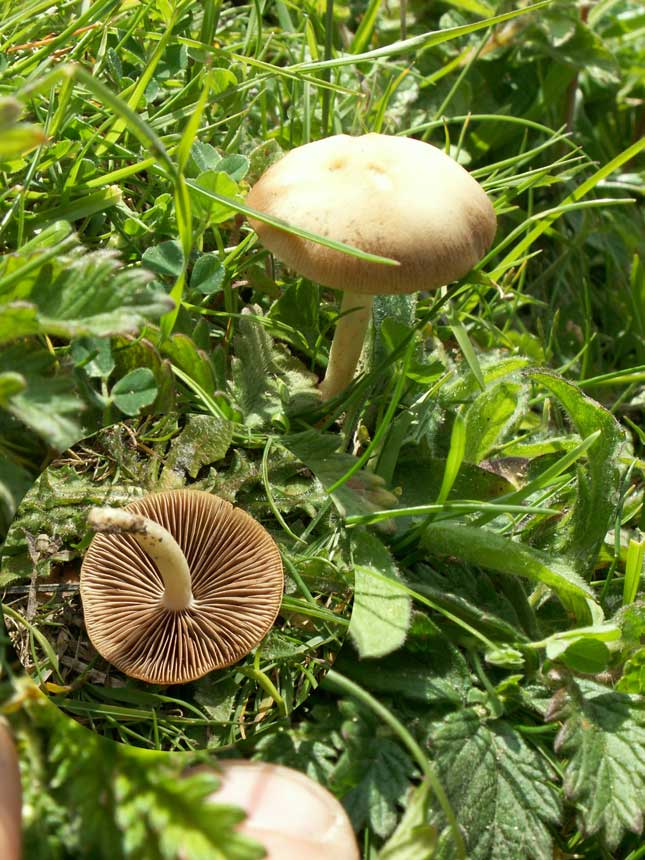 |
 |
26
May 2006
From
the Coastal
Link Cyclepath on the Adur Levels
(600 metres away) it looked like the Horseshoe
Vetch was growing in profusion, but at
least one week off its peak. The Bulbous Buttercups
in the pasture south-east of Old Erringham
Farm were flowering in a greater yellow expanse
which is unusual as they usually less showy than the Horseshoe
Vetch on the Shoreham Bank.
15
May 2006
Butterflies
were slow to appear. The lower slopes of Mill
Hill produced 15 Dingy Skippers,
just the one confirmed Grizzled Skipper
and three Small Heath Butterflies
in the hazy sunshine (19.8 ºC)
over a quarter of the transect covering about two-thirds of an acre. An
Orange-tip
and a Large White
fluttered by. Pyrausta nigrata moths
were particularly noticeable as I tried to find Grizzled
Skippers. There were most likely more of the
latter skipper, but I failed to note them. The Adonis
Blue failed to appear. A Silver
Y Moth flew into the Privet. The Grizzled
Skipper was noted visiting Milkwort.
A few Dog Violets
were still in flower but they were already overtaken by Milkwort.
Full
Butterfly Report
 |
 |
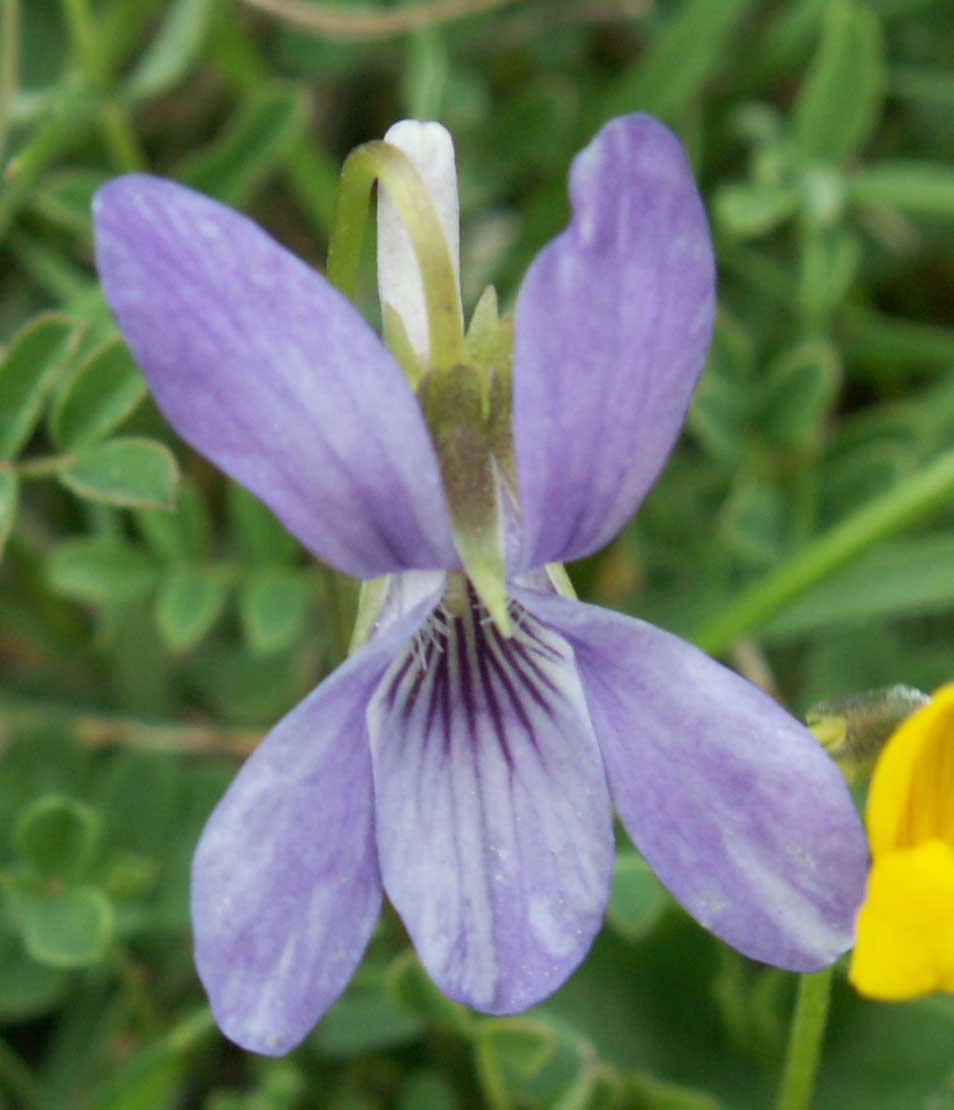
|
 |
A species of Click
Beetle (Elateridae).
The underneath picture is
the insect inverted.
ID
by Bill Grange
|
Cowslips
on the Shoreham Bank
|
Dog
Violet on the Shoreham Bank
|
Small
Heath Butterfly
|
Adur
Beetles
14
May 2006
At
10:00
am the resident Kestrel
hovered in the overcast sky before the start of the Butterfly
Walk on the lower slopes of Mill Hill which
produced just two Small Heath Butterflies
and a handful of small Pyrausta nigrata
moths. The Horseshoe
Vetch was just beginning, only about 5%
of its full splendour.

|
 |
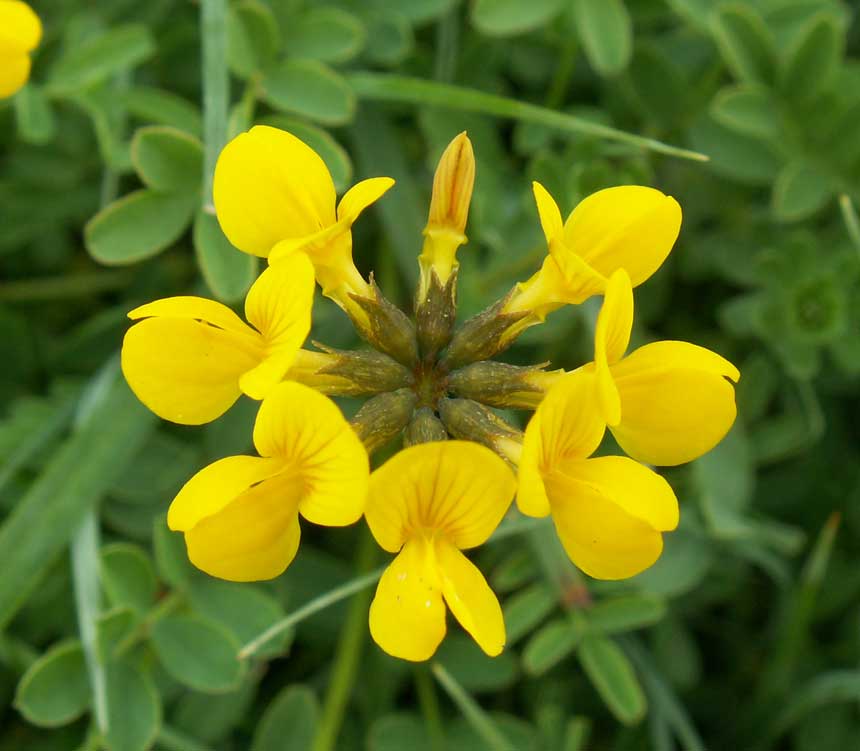 |

|
|
Rhogogaster
sawfly
|
Bird's-foot
Trefoil
|
Horseshoe
Vetch
|
Sedge
|
The
sun struggled to come out in the afternoon and I recorded my first male
Adonis
Blue Butterfly of the year on the Shoreham
Bank with 13 Dingy Skippers,
five Grizzled Skippers
and three Small Heath Butterflies.
At least one Bird's Foot Trefoil
was noted in flower next to the winding path. A small Rhogogaster
sawfly
was seen. Three Jackdaws
were feeding amongst the Horseshoe Vetch.
Full
Butterfly Report
Adur
Butterfly First Flight Times
Adur
Sawflies
10
May 2006
A
quick visit in the sunshine and the Horseshoe
Vetch had increased to hundreds of plants,
but it is nowhere near its brilliance and could not be seen from the Steyning
Road. Dingy Skippers
were mating. There were about a dozen individuals compared to only one
Grizzled
Skipper,
one
Peacock
Butterfly and one Brimstone
Butterfly seen.
I spotted
the leaves of Marjoram
next to the path; a herb I had not noted before on the bank. Mostly, there
were new growths of Perforate St. John's
Wort though.
Butterfly
Report and List
Adur
Skippers Page
7
May 2006
The
sun was out but it was mild (under 20º
C) in the afternoon. The number of small moths
were notable with both Pyrausta nigrata
and
Pancalia
being common (over 100 each). Five each of Dingy
Skippers and Grizzled
Skippers were recorded with a Peacock
Butterfly and a Large
White Butterfly.
Butterfly
Report
4 May
2006
On
the second warmest day of the year as the temperature attained 21.6 ºC
at 1:13 pm, I was greeted by a fast flying
butterflyI
could not identify before I descended the steps down to the lower slopes.
Horseshoe
Vetch was still not in profusion, the
hundreds of flowers exceeded in numbers by Dog
Violets.
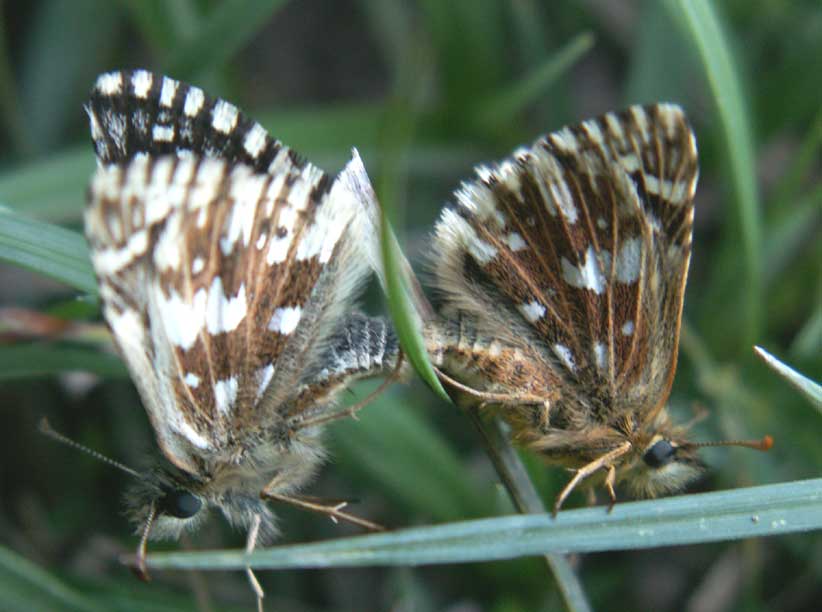 |
 |
Grizzled
Skippers were mating in a small depression
on the lower slopes of Mill Hill |
The
first butterfly identified was a Brimstone
and
there were about five of these big yellow butterflies. A pair of courting
Dingy
Skippers came next and at least four were
seen. They made at least two visits to the scattered Horseshoe
Vetch in the minute the first pair were
in view. Grizzled Skippers
visited a Dog Violet followed
by a Milkwort.
Two
were later filmed mating in the shelter of one of the small depression
caused by rabbits or uprooted shrubs. Altogether at least eight were positively
seen, including another pair with the male chasing the female through the
herbs. One Green-veined White Butterfly
flew
over and settled long enough for identification. Lastly, at least one and
probably four
Peacock Butterflies
were spotted, but only one settled on the bare earth path.
Butterfly
List
1 May
2006
May
came in with a shower. On the lower slopes
of Mill Hill, the first Milkwort
was seen in flower and the exiguous beginnings of the Horseshoe
Vetch, Hippocrepis comosa,
with visiting pollen beetles which were
also present on nearby Hawkbits (or Dandelions?).
Dog
Violets were still abundant and at the
northern end dimunitive Ground
Ivy was noted.
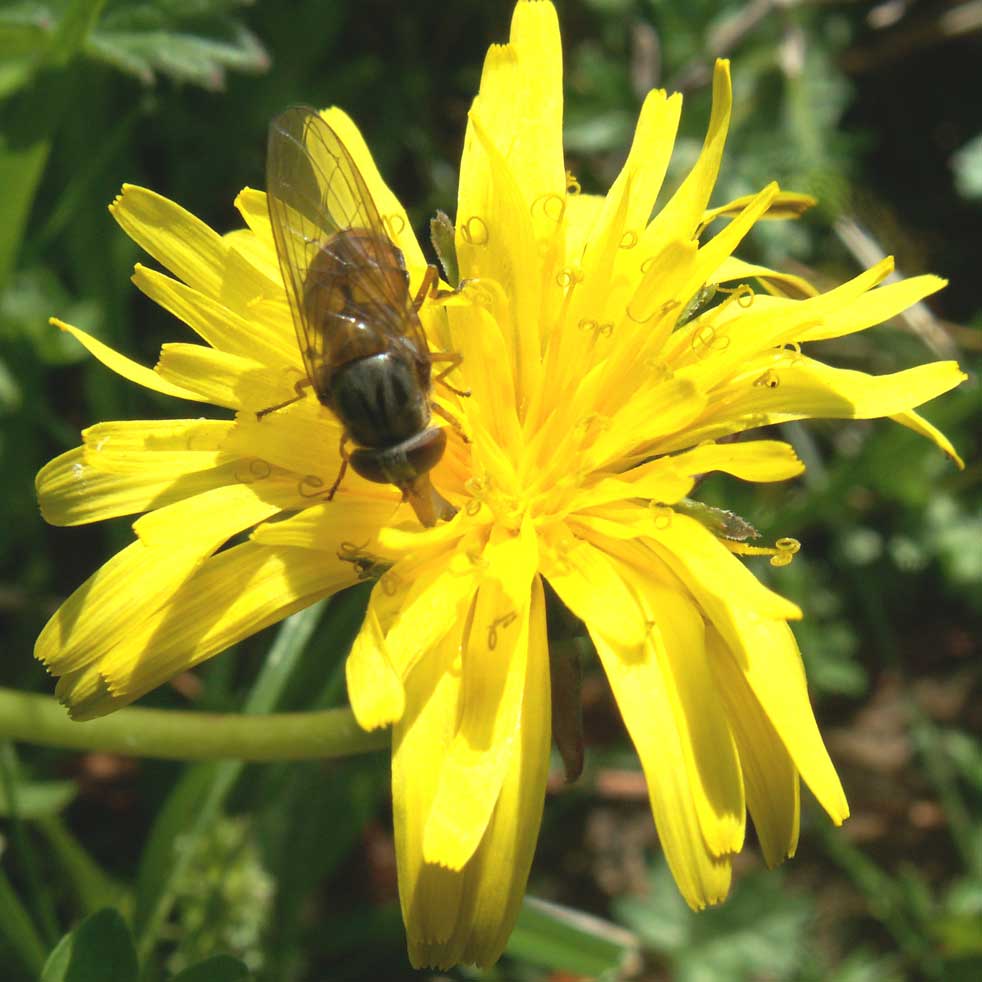 A
single first Grizzled Skipper
was recorded, the first of the year, with frequent (10+) small moths
Pyrausta nigrata, seen for the first
time this year, visiting Hawkbits.
A probable Dingy Skipper was
spotted briefly. Pancalia
micro-moths were seen and were probably frequent to common, but because
these are very small and hidden, their numbers could not even be guessed
at. Hoverflies occured including Rhingia
campestris and about a dozen were
noted, and others included Syrphus.
Small bees
visited the Hawkbits (or Dandelions?)
and there were scores of these and I think the species is Lasioglossum
calceatum. A Bee-fly
settled briefly on the blue anorak
I was wearing. From its brown colour I am assuming this was the species
Bombylius
major. The dangly St. Marks
Fly, Bibio, was only around one
of the long grass and ruderal plant patches.
A
single first Grizzled Skipper
was recorded, the first of the year, with frequent (10+) small moths
Pyrausta nigrata, seen for the first
time this year, visiting Hawkbits.
A probable Dingy Skipper was
spotted briefly. Pancalia
micro-moths were seen and were probably frequent to common, but because
these are very small and hidden, their numbers could not even be guessed
at. Hoverflies occured including Rhingia
campestris and about a dozen were
noted, and others included Syrphus.
Small bees
visited the Hawkbits (or Dandelions?)
and there were scores of these and I think the species is Lasioglossum
calceatum. A Bee-fly
settled briefly on the blue anorak
I was wearing. From its brown colour I am assuming this was the species
Bombylius
major. The dangly St. Marks
Fly, Bibio, was only around one
of the long grass and ruderal plant patches.
26
April 2006
With
the sun out so were the butterflies
but only a large handful on Mill Hill.
The lower slopes immediately showed a Small
White followed by two Brimstone
Butterflies, one
Comma and another pair of Peacock
Butterflies. At the northern end I spotted
my first Dingy Skipper
of the year that briefly sparred with a Peacock
and the size difference was most noticeable. The Dingy
Skipper is the first of I have heard of anywhere
this year. A few Sweet Violets
were discovered amongst the thousands of Dog
Violets. A Pancalia
micro-moth was noted.
Adur
Butterfly List 2006
Adur
Butterfly First Flight Times
24
April 2006
It
was hazy and misty in the late afternoon. Thousands of Dog
Violets had now replaced the Sweet
Violets, where the first of the micro-moths
Pancalia
were seen amongst the exiguous leaves of the violets
on the bank. These Dog Violets
were every bit as bright as the Sweet Violets,
but the distinctive white spur is easily seen. Blackthorn
(=Sloethorn) was flowering in the central
area of the scrub/hedgerow seperating the bank from the hay meadow below
and to the west.
The
small brown mushrooms with a white stem had
appeared again. I have still not identified this species which is of irregular
occurence after rain.
The
best suggestion was the species Stropharia coronilla.
Adur
Fungi 2006
 |
19
April 2006
This
attractive bee seen on the lower slopes (southern end) of Mill
Hill was the first time the Tawny Mining
Bee, Andrena
fulva, has been recorded on these
Nature
Notes pages. It is a female. The species
is common and widespread.
ID
by Nicolas
J. Vereecken on the Bees, Wasps and Ants Recording Society (Yahoo Group)
|
18
April 2006
Amongst
the plants noted first in flower today were Dog
Violets and Cowslips
on the lower slopes of Mill Hill. An orange,
faded slightly to beige, Small Tortoiseshell
Butterfly flew strongly. One of the remaining
Sweet
Violets attracted a Peacock
Butterfly.
9
April 2006
There
were no butterflies to be seen at all on
a quick passage walk of 15 minutes. The only thing of note was one of small
Lasioglossum
bees on a solitary Dandelion. |
 |
 |
6 April
2006
At
last the first butterflies on the lower slopes
of Mill Hill an orange butterfly that rose
from the path and flew off so quickly, I was not able to confirm which
species it was. I saw it twice more and I thought it was a Small
Tortoiseshell (now recognised as the first
of the year). It would not settle and could not be confirmed as the first
(it could have been a Comma?).
Then my eyes were drawn to the fluttering on another butterfly which was
an unmistakeable Peacock Butterfly
nectaring on the thousands of Sweet Violets.
At least two were seen and possibly more. Then a Comma
Butterfly was spotted also choosing the
Sweet
Violets.
 28
March 2006
28
March 2006
No
butterflies
seen on Mill Hill. About one in a thousand
of the Sweet Violets
were white in colour. About 20 of the white ones were actually seen on
the lower slopes in the Force 5 breeze gusting
to Gale Force 7. I thought I saw and heard a ChiffChaff
in a Hawthorn just up from the winding path.
22
March 2006
Hundreds
of Sweet Violets
were in flower over the lower slopes of Mill
Hill. These had their usual exiguous leaves and some were pale violet
and a handful had white flowers.
Adur
Violets
10
February 2006
Nothing
to report in the way of wildlife. The short grass (it seems to have grown
in the winter months?) seems to be obscuring most of the Horseshoe Vetch
leaves at present. There were some straw-like tufts of the dead stems of
grasses visible as well. There seems to be more Dogwood
(incursive undesirable scrub) than seen previously. The temporary metal
barrier has been reinstated and the cattle
cannot get on to Mill Hill by the stile (in the north-west).
The cattle are now on the meadow to the north-west of Mill Hill grazing
the rough grass after harvest. Sheep
are on the flood plain pasture to the west. All these lands are the private
agricultural fields of Old Erringham.
1 February
2006
The
cattle
have been removed from the "lambing field" or intermittent pasture to the
south-east of Old Erringham Farm and will not now venture on to Mill
Hill. This is probably because the grass on the land has now been grazed
to its optimum and is best left for the spring growth. This pasture is
of no butterfly value although the fringes
may contain the occasional wild flower. Bulbous Buttercups are common in
spring.
January
Cattle Report
30
January 2006
There
are cattle
all over Mill Hill from Old Erringham Farm
enriching the low nutrient hillsides with their dung and threatening the
flora (Horseshoe
Vetch) and the internationally important
population of Chalkhill Blue Butterflies.
It looks like the fence was broken down deliberately, probably at the instigation
of the South Downs Conservation Board
on public land given to the people of Shoreham.
There is also the danger or erosion, breaking up the steps under the hooves
of the cattle and reduction of the amenity value of the downs. They were
timid cattle and they were shooed of the vulnerable lower slopes by the
public.
 13
January 2006
13
January 2006
My
first visit of the year to the southern area and lower slopes of Mill
Hill failed to find anything remotely newsworthy. The lower slopes
looked more grassy than normal after the rain and there was still discarded
chopped down Privet
laying about. Three or four Rabbits
were seen out in the open using the discarded Privet
as shelter. The remains of Carline Thistle
were showing.
Lower
Slopes (Shoreham Bank) 2005
Mill
Hill 2006
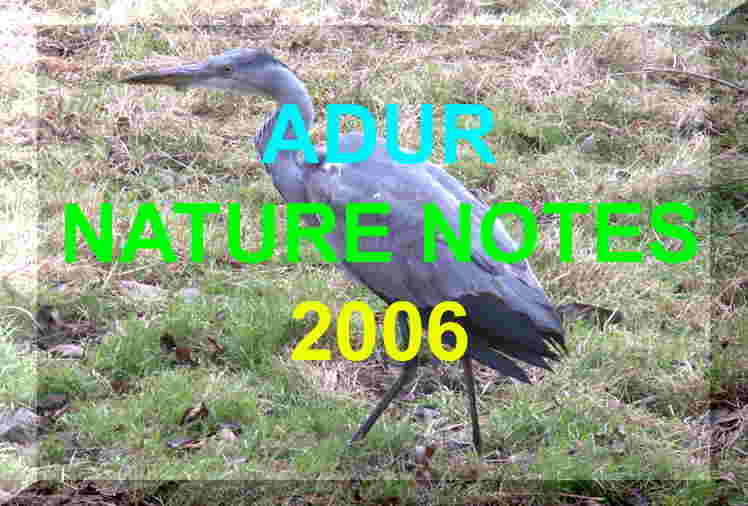
Technical
Flora Images Mill Hill Lower Slopes
 Lower
Slopes of Mill Hill 2006: The
Shoreham Bank
Lower
Slopes of Mill Hill 2006: The
Shoreham Bank

























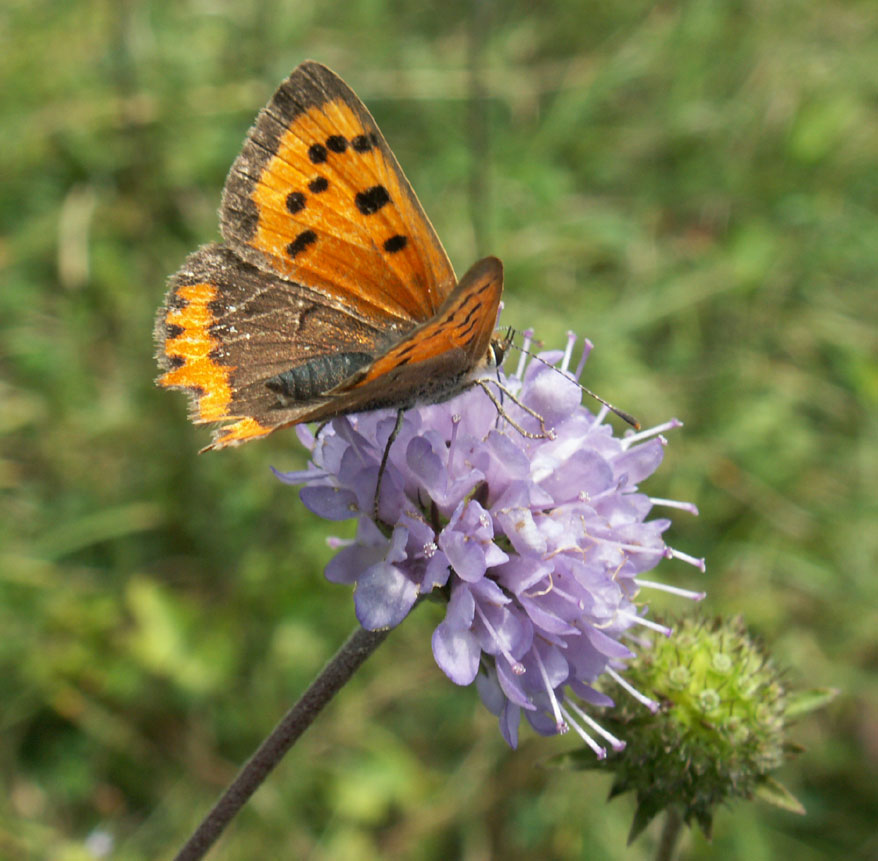
173.jpg)

















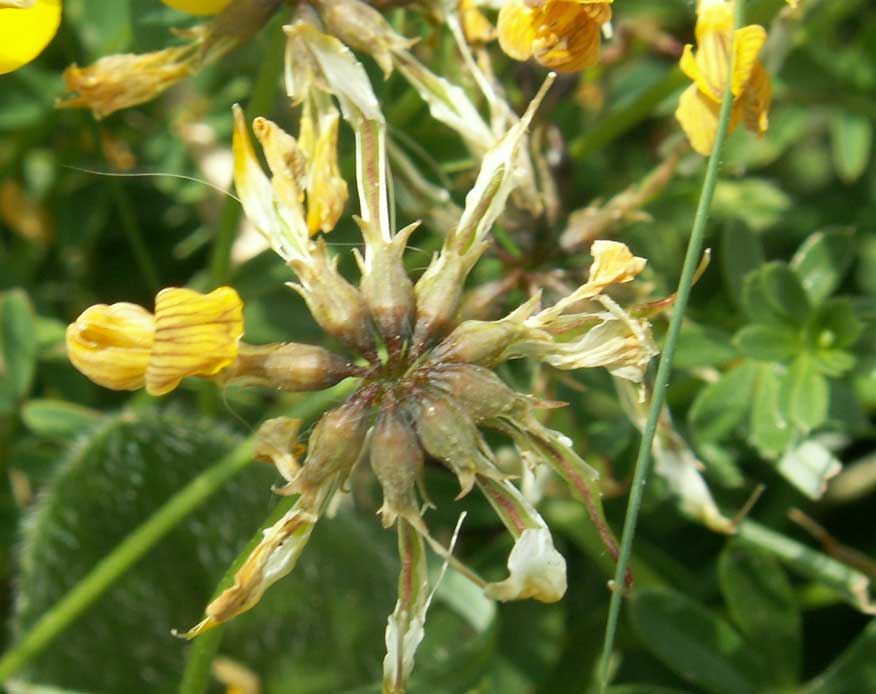

 Yellow
Wort leaves had pushed up but were not flowering
yet, with the first signs of Dropwort,
Hairy
Violet in flower and the beginnings of Wild
Thyme, more in the Old Erringham pasture than
on the Shoreham Bank. Mouse-eared Hawkweed
was
lost amongst the Horseshoe Vetch
on the lower slopes but they were common in the pasture as well where the
flowers were clearly
Yellow
Wort leaves had pushed up but were not flowering
yet, with the first signs of Dropwort,
Hairy
Violet in flower and the beginnings of Wild
Thyme, more in the Old Erringham pasture than
on the Shoreham Bank. Mouse-eared Hawkweed
was
lost amongst the Horseshoe Vetch
on the lower slopes but they were common in the pasture as well where the
flowers were clearly 





